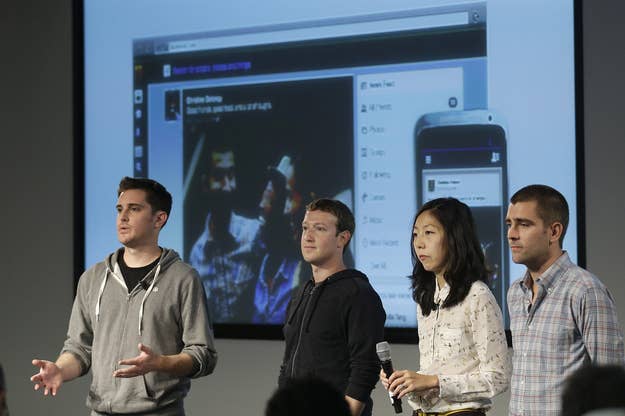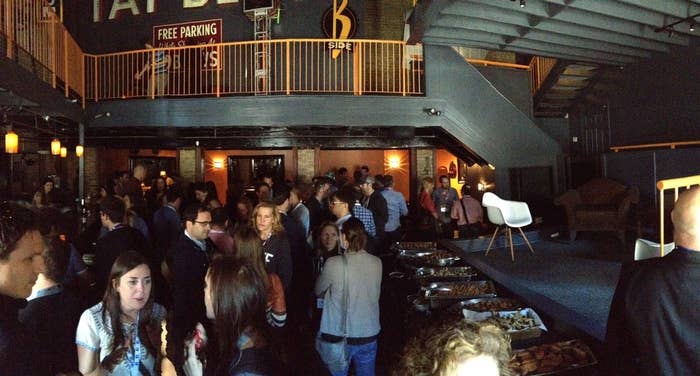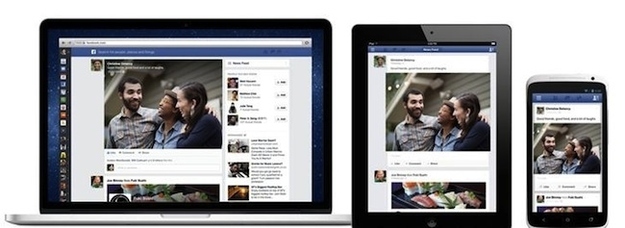
Does Facebook know how to get old?
At a Facebook developer event in Austin on Sunday, the company's golden children weren't so sure. Many of the people there either ran or represented companies that make Facebook apps. A rep for King.com, whose Candy Crush Saga is the most popular app on Facebook with over 40 million monthly players — nearly one in 20 in the entire world — stood at a small table with a demo on his iPad Mini. Some asked him for advice; most chatted for a moment and returned to the crowd to pitch their own apps. Their discussions, just like their apps, orbited around Facebook's mysterious, powerful core: The Graph.
The mood was uneasy, and not just because Facebook, which was hosting the event, had a number of employees present, including Sam Lessin, the animated 29-year-old whose decisions as the head of "Identity" at the company could dramatically alter the fates of every developer in the room. He was a bodily reminder of a reality that Facebook developers, many of whom are much older than Lessin, confront every day: that they exist both because and at the mercy of Facebook, a young company that is, by its own admission, figuring things out on the fly.

The company's unpredictable adjustments to the News Feed can turn success stories into has-beens overnight, or vice versa; the CEO of Abvio, which makes Runmeter, told me that Facebook's brand-new official (and enforced) posting actions for running had made his life easier by "leveling" the playing field among exercise apps.
There was a certain defensiveness — or was it hopefulness? — in the developers' voices as they rattled off their uniformly impressive user numbers, as if saying them out loud would make them last.
But the real source of anxiety, which developers were less eager to talk about on record, was the sense that Facebook's core product — the graph itself, Facebook's database of your relationships — is losing value. This massive map of who cares about whom (and why) literally created itself during Facebook's explosive growth phase. But as Facebook matures, and its users settle in, the graph runs the risk of falling into disrepair.
The apps represented in that bar — and indeed, all apps, including the kind that could make Facebook more "engaging" to people — demand a healthy, up-to-date, relevant social graph. Their concepts involve a perfect, or at least very good, realization of Zuckerberg's vision of the graph. In 2007, he laid it it out clearly: "As Facebook adds more and more people with more and more connections, it continues growing and becomes more useful at a faster rate," he said. Wearing Adidas sandals and baggy jeans, he told the crowd, "It has access to people's real connections and that trumps everything else."
But consider a social graph that doesn't meet that threshold. A social graph full of old friends and recent acquaintances. How can a Facebook travel app recommend a trip if you don't really know the people it's drawing data from? What good is a recruiting app if your Facebook account doesn't include your current professional peers? How can a social game work if it's matching you against people you haven't spoken with in years?
What good is Facebook, in other words, if your friends aren't really your friends?
Facebook users are beginning to show signs of boredom; a Pew Research Center report found an "overall decrease in their interest in the site" as one of users' main reasons for taking a break from it, which over half of users said they had done. In addition, with a billion people already signed up, Facebook is simply running out of new users. (In August of this year, more than 100 million of Facebook's users will have been on the site for more than five years.)
Soon, there won't be "more and more people with more and more connections." There will be the same people with fewer and fewer.
Facebook's intoxicating first phase was about discovering and curating friends. Facebook's equally compelling second act, which was about interacting with said friends, took a strong social graph for granted — it built on the assumption that your graph had integrity and relevance, and it did little to inspire you to maintain it. You didn't need to! It was still new, so the apps and new features worked fine.
But by opening the graph to developers and refocusing users on apps, games, and small interactions — by training our sights on the feed, not our friends — Facebook effectively froze it in time. With the News Feed, the primary mode of interaction on Facebook is through apps and outside content, whereas it used to be through Facebook's core functions, such as friending, messaging, and liking. Take a look at your Facebook account today. How closely does it mirror your real life? Are the people in your feed more or less present in your life than they were two years ago? Is Facebook the first place you'd go to share personal news? Does it still have access to your "real connections," to borrow Zuckerberg's phrase?
Facebook, it seems, is demanding more and more of a graph that is able to provide less and less.

Facebook's new design posits that its engagement problem, and by extension its graph problem, can be solved by moving things around on the page, changing the size of a photo, or allowing users to sort their News Feeds in a finer way. By rearranging and re-presenting the data its users have already given it, Facebook believes it can feel new again.
Facebook needs to make maintaining a Facebook account as compelling as creating one. And it's not clear how Facebook can incentivize people to update their accounts — to trim old friends, to add new ones, to adjust all the various sliders and dials that power Facebook today. This is labor; it feels like doing repairs, not creating something exciting and new. News Feed subscriptions were a step in this direction but appear to have backfired. Graph Search promised to surface untold insights lurking in your social graph. Instead, reviewers (and users) found it lacking in function and depth. The new design's "friends-only" feed will serve as a good meter of how healthy your graph is. Whether it will inspire you to fix it is another matter.
App developers are actively planning for the graph-rot contingency. Open Graph has allowed them to amass huge user bases, which many are leveraging to build separate graphs of their own. A developer of a travel app told me that he was using the data gathered from his Facebook app to create a non-Facebook-bound recommendations engine; instead of recommending trips based on where your Facebook friends have gone, it makes recommendations based on where similar travelers have gone. King.com's representative emphasized that the site's external portal saw over 10 million unique visits a month, independent of Facebook. Nearly every developer I spoke with had devised some sort of Facebook escape pod.
(That's not to mention Facebook's nascent teen problem: In a recent interview with BuzzFeed, the founder of Albumatic, a new photo-sharing app that plugs into Facebook, said he was offering a non-Facebook sign-in option after younger testers claimed not to have accounts.)
At the bar, Lessin was unable to speak about this issue on record. But he was fielding multiple questions about it.
As I was waiting to speak with Lessin, a high-profile tech blogger known for his bullish stance and optimistic reporting on Facebook assured Lessin — and everyone else within earshot — that his Facebook experience was fantastic, and that his friends were numerous, appreciated, and relevant. They share great things, he said.
Even he seemed concerned, though, in his own way. Is everyone's experience that good? he wondered aloud. And how can Facebook make sure?

